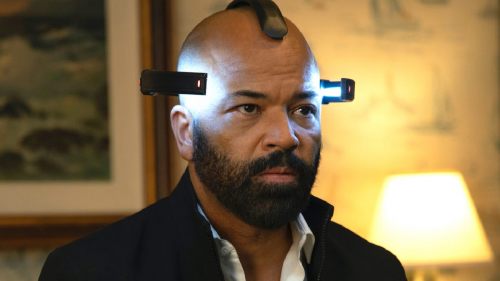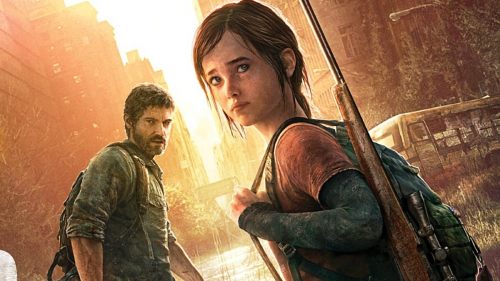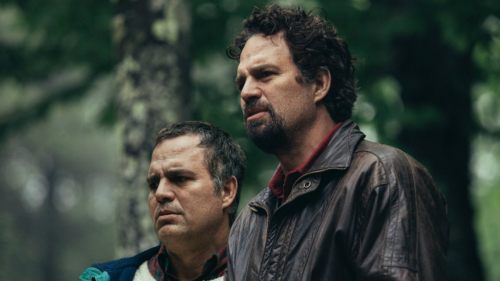In CHERNOBYL, Cowardice Is Scarier Than Radiation
It’s probably unhealthy to obsess over disasters like the 1986 Chernobyl nuclear reactor explosion. The story is depressing from top to bottom, from radiation sickness to institutional malfeasance to the general bleakness of the Soviet Union in the 1980s. But as with numerous other disasters over the years, I can’t stop thinking about it. Maybe it’s normal to take an interest in such things. Maybe I’m unusually attuned to depressing stories. Maybe it’s radioactive Maybelline.
Whatever the reason for its continuation, my current obsession emerged thanks to writer Craig Mazin and director Johan Renck’s outstanding HBO miniseries Chernobyl. Mazin and Renck have produced the most terrifying piece of screen entertainment this year, and they’ve done so without a single serial killer, supernatural creature, or malevolent presence. The terror of Chernobyl is a deeper one, stemming from the arrogance and callousness of humankind trying casually to tame nature’s most powerful forces - while succumbing to its own worst impulses.
If Godzilla: King of the Monsters’ pro-US-military storyline sought to make nuclear radiation seem friendlier (bizarrely, considering Godzilla’s cultural origins), Chernobyl does the exact opposite. Radiation is its monster: an insidious and unimaginably destructive killer, unleashed via reactor explosion across Ukraine thanks to a wide array of factors. It's ever-present through the series; whether a dosimeter is going off or not, we're always aware of it. At its most horror-movie, Chernobyl traps three men in the reactor’s flooded basement without any light to guide them, a beat akin to many a scene in serial-killer movies. Here, though, the killer is silent, invisible, and (for all intents and purposes) formless. What's more, it turns all it touches into little radioactive death-zones in their own right: one character is told her radiation-poisoned husband isn't her husband anymore, he's "something else now...he's dangerous to you."
In terms of “traditional” horror, the treatment of radiation in Chernobyl is obvious. Numerous men at the plant suffered terminal radiation poisoning, their bodies breaking apart at the cellular level while they were still alive to experience it. We’re not spared those grisly details: Jared Harris delivers a chilling monologue about the biology involved, and we later see the hideous results, with Renck’s camera lingering only long enough to sear the imagery into our minds. One character is so badly disfigured he’s framed out altogether, leaving us only Emily Watson’s reaction for reference. After what we’ve already seen by then, we shudder to imagine his fate.

It’s not the body-melt flesh parade or the ominously glowing rubble that truly gets under the viewer’s skin, though. It’s the little things. With hindsight and knowledge, we can identify the warning signs the people of Chernobyl and Pripyat couldn't and didn't. Employing much of the odd lyricism found in his two late-period David Bowie videos “Blackstar” and “Lazarus,” Renck extracts harrowing dread and foreboding from shots of trees blowing in the wind; dust landing on skin; people going about their business with no idea they’re being irradiated. This is how we would experience radiation in real life, if we weren’t told it was there; or rather, it’s how we wouldn’t experience it. It’s the delayed effects - seen in the show via characters' declining health and one tragic radiation-poisoned pregnancy - that are most frightening of all.
Oddly enough, the true magnitude of the radioactive horror only makes itself clear during the cleanup. An unprecedented disaster required an unprecedented response, and cold pragmatism was required to accomplish it. The cruel, brutal reality of the situation was that dozens if not hundreds of people would have to die, or face drastically reduced lifespans, in order to prevent an entire continent from becoming uninhabitable. Some had to forcibly remove people from their homes. Others had to dig tunnels directly underneath a melting-down reactor core. Yet others had to shoot irradiated pets. The dehumanising term given to those sent into the building to clear radioactive debris - “bio-robots” - is chilling in the extreme. It’s all grim, but it all had to be done. There was no way around it.
Mazin notes in the (borderline-mandatory) Chernobyl Podcast that, in addition to being uniquely placed to create the disaster, the Soviet Union was uniquely equipped to accomplish this cleanup, given the country’s emphasis on collective work for the nation's benefit, and he’s not wrong. It may seem barbaric to send people into a highly radioactive zone knowing that - irrespective of the safety measures put in place - they’d suffer as a result, but so imperative was it that the challenge be met, that's what they had to do. The sacrifice of the Chernobyl Liquidators is beyond moving, and those conscripts deserve veneration as heroes. This alone amongst the many stories from Chernobyl is actually somewhat inspiring, in a morbid way - that, as with the end of World War Two and hopefully as with climate change, a concerted sacrifice can be made for the greater good. It had to be done.
Radiation is the monster in the science-fact horror movie of Chernobyl, but the Dr Frankenstein that unleashed it was all too human. Rhetorically or no, the show’s opening and closing lines ask about “the cost of lies” - but the human foibles that brought about the disaster go deeper than mere dishonesty. Throughout the proceedings, there’s much back-and-forth over whether the disaster was the result of faulty design or human error. But faulty design is human error, and the human error that allowed both to happen is a greater, philosophical problem.

Many poor decisions were made, deliberately and accidentally, leading up to the reactor explosion, and they were all driven by what deep down are very human motivations. Some figures in the Chernobyl saga acted the way they did out of a desire for promotion; others, out of fear of punishment. Most were simply doing the best they could under the circumstances. Those circumstances were created by a state apparatus centred on state secrets and negligent bureaucracy, but that apparatus ultimately grew from pride and fear, too.
Radiation is not man-made - even nuclear fission reactors have been found naturally occurring on Earth - but lies are, and when the two are mixed, disaster erupts. When a truth is dangerous, expensive, or embarrassing, we have a tendency to ignore it, or to cover it up. This happens on every scale, from the personal to the global, and it comes from the craven, but absolutely universal, instinct for self-preservation. Sometimes, our self-interest intersects with the interests of others; other times, it doesn’t. When it comes down to it, the people behind the disaster made their decisions based on what they thought was best for themselves, their futures, and their families. We’d like to think we’d make better decisions in such situations, with the KGB threatening execution or with a bureaucrat promising promotion. Maybe we would. Maybe we wouldn’t. To truly interrogate ourselves on the subject is terrifying.
With every historical drama that gets made, there’s an inherent question of “why now?” Stories often become more universal the more specific they get, and this quality of storytelling is on full display in Chernobyl. The disaster was a Soviet disaster, and many of the systems that allowed it to take place were Soviet systems, but the underlying issues were not inherently Soviet. When Legasov bemoans reactors being made to lax safety standards "because it's cheaper," he's referring to the Soviet state, but he might as well be referring to any other state, or any company, or any human being. Everyone's run into problems created by corner-cutting at one point in their lives. Many of us have caused them. Very, very few of us have caused international nuclear incidents through them.
It’s easy to claim that Chernobyl is Actually About Today’s Issues. Given the institutional lies, the sweeping nature of the disaster, and the seemingly insurmountable cleanup task that continues to this day, the climate change analogy especially is eye-rollingly obvious. We disrespected nature with our petty desires, we're paying the price, and we'll have to work our asses off to fix it. The show is about these things, and it is right to (indirectly) address them. But it’s also about a dark side of humanity we don’t often engage with: not that of active violence or hatred, but of quiet, self-serving dishonesty. Chernobyl represents that dishonesty taken to a systemic extreme, but we all share in the basic weaknesses that caused it.
That is the true villain of Chernobyl: less gruesome than radiation poisoning, but far more unsettling to contemplate. We all hope we'd have the courage of the Liquidators and not the cowardice of the instigators. But would we?



